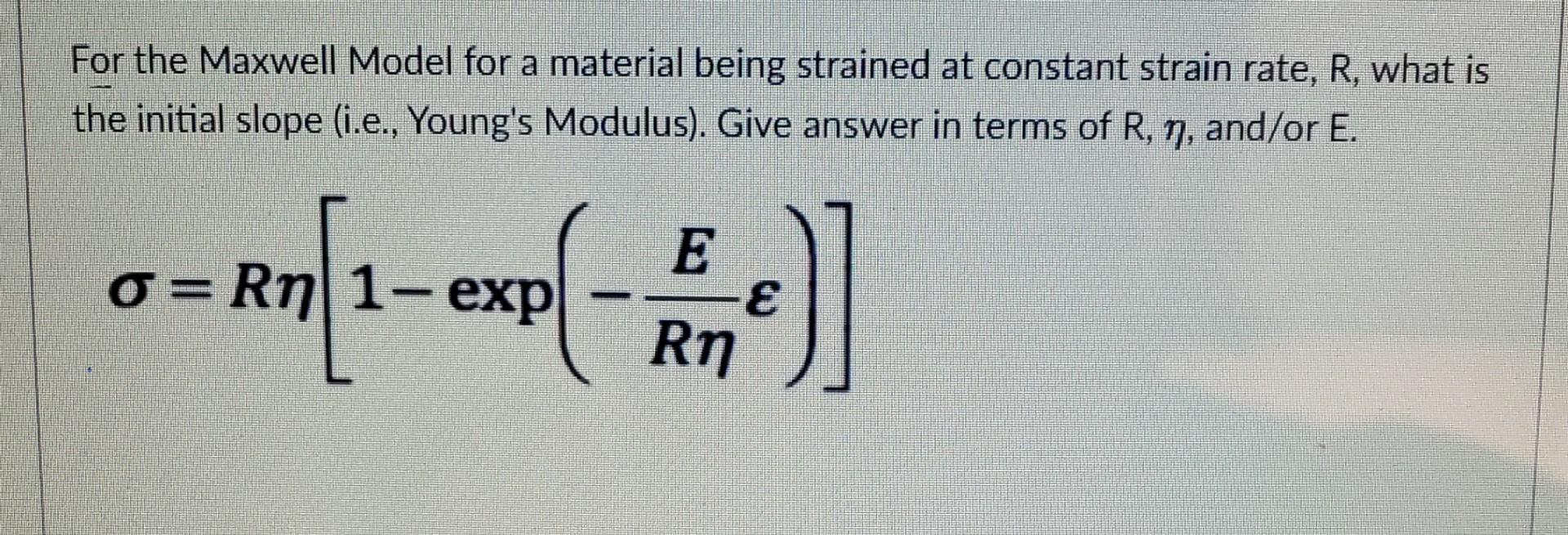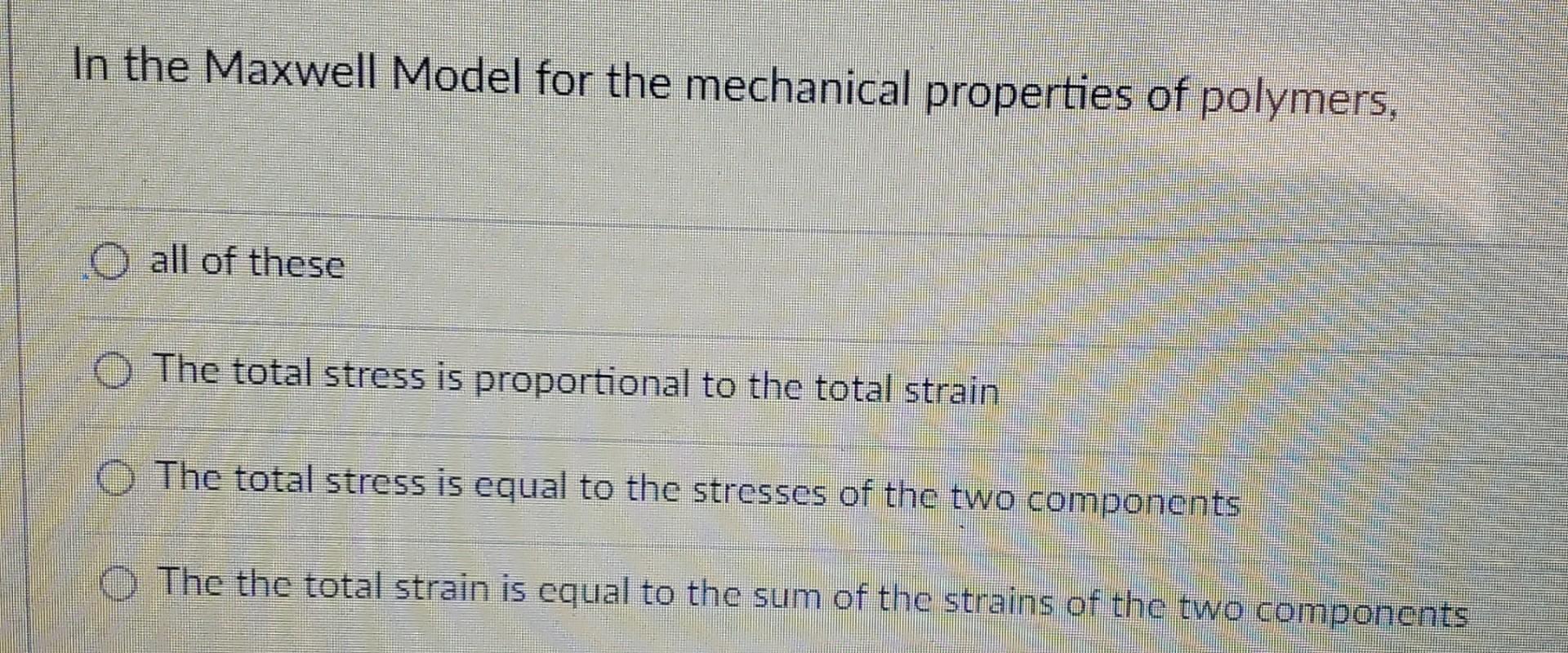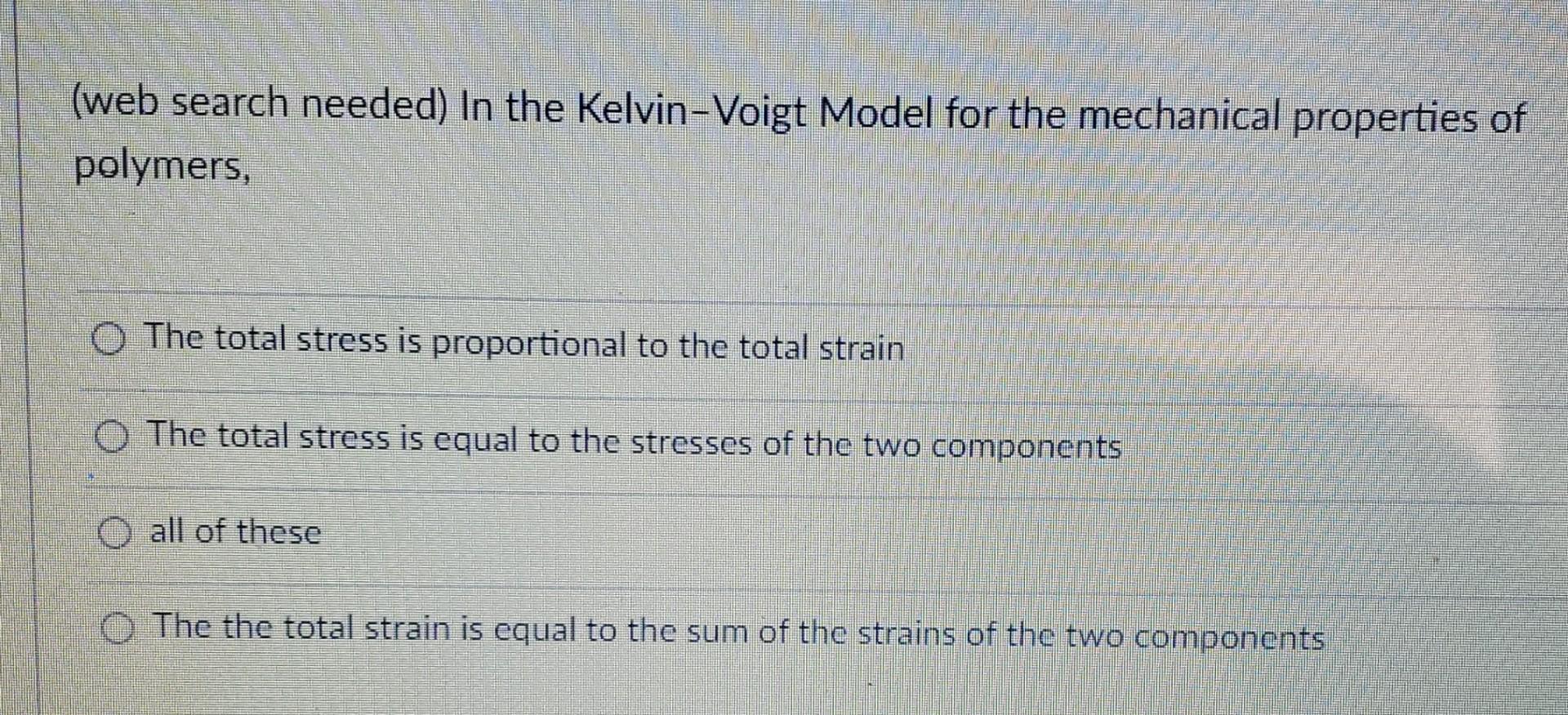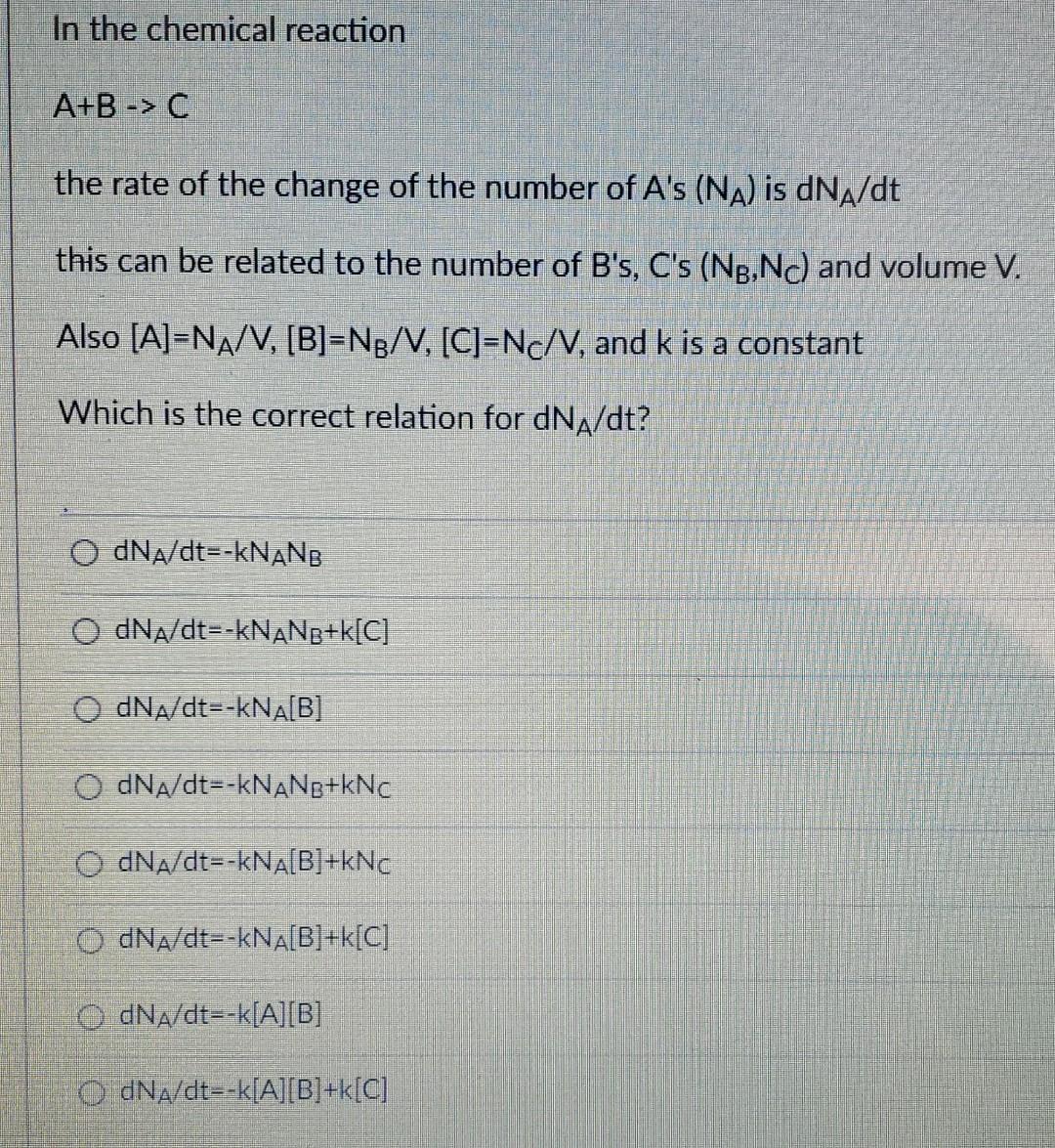Answered step by step
Verified Expert Solution
Question
1 Approved Answer
show all answers Part A to G For the Maxwell Model for a material being strained at constant strain rate, R, what is the initial






show all answers Part A to G
For the Maxwell Model for a material being strained at constant strain rate, R, what is the initial slope (i.e., Young's Modulus). Give answer in terms of R,, and/or E. =R[1exp(RE)] For the Maxwell Model for a material being strained at constant strain rate, R, what value does the stress have at long time? Give answer in terms of R,, and/or E. =R[1exp(RE)] How would one plot the following equation to get a straight line R=R[E(RPE)]ln()vs.ln()ln(R)vs.ln()ln()vs.ln(R)vs.ln(R)vs.ln() In the Maxwell Model for the mechanical properties of polymers, all of these The total stress is proportional to the total strain The total stress is equal to the stresses of the two components The the total strain is equal to the sum of the strains of the two components (web search needed) In the Kelvin-Voigt Model for the mechanical properties of polymers, The total stress is proportional to the total strain The total stress is equal to the stresses of the two components all of these The the total strain is equal to the sum of the strains of the two components In the chemical reaction A+BC the rate of the change of the number of As(NA) is dNA/dt this can be related to the number of Bs,Cs(NB,NC) and volume V. Also [A]=NA/V,[B]=NB/V,[C]=NC/V, and k is a constant Which is the correct relation for dNA/dt ? dNA/dt=kNANBdNA/dt=kNANB+k[C]dNA/dt=kNA[B]dNA/dt=kNANB+kNCdNA/dt=kNA[B]+kNCdNA/dt=kNA[B]+k[C]dNA/dt=k[A][B]dNA/dt=k[A][B]+k[C]Step by Step Solution
There are 3 Steps involved in it
Step: 1

Get Instant Access to Expert-Tailored Solutions
See step-by-step solutions with expert insights and AI powered tools for academic success
Step: 2

Step: 3

Ace Your Homework with AI
Get the answers you need in no time with our AI-driven, step-by-step assistance
Get Started


